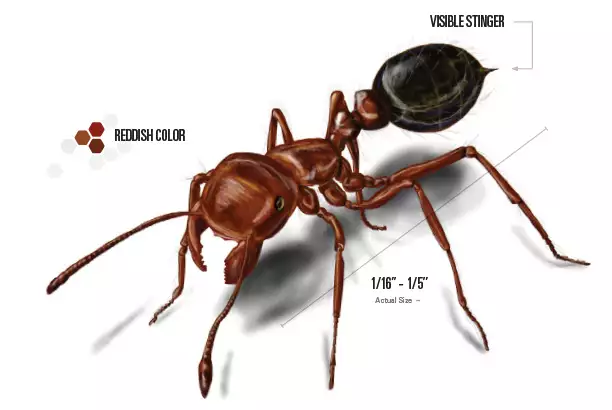- Contact
- 01211118453
- Send Email
- info@spider-eg.com
Fire Ants

Fire Ants
Facts, Identification & Control
Latin Name
Solenopsis invicta
Appearance
What do they look like?
- Color: Reddish
- Size: about 1.6 to 5 mm
Read more about identification of fire ants.
How Did I Get Fire Ants?
Fire ants favor warm, sunny conditions. They prefer dry fields and avoid shady areas such as woods. Typical mounds can grow up to 61 cm in diameter and 18 cm high. These colonies can contain several hundred thousand ants, including at least one queen.
Red imported fire ants may also move into yards as a result of infested nursery plants or grass sod being used in the home’s landscaping. Since red ant colonies often grow large enough to extend across several properties, control and prevention can be challenging.
How Serious Are Fire Ants?
When attacking, fire ants first use their mandibles to grip their prey, and then inject venom through a stinger. Fire ant stings are painful for most humans and fatal to some: if a victim experiences a severe reaction such as sweating, nausea or excessive itching, emergency medical services should be contacted immediately. Their sting, which includes alkaloid venom, is highly irritating to humans and results in red bumps and white pustules, which can ultimately lead to scarring. The sensation of a fire ant burn has been described as “stinging” and “intense burning,” and fire ants are known to attack potential threats or prey in large numbers. A fire ant colony may contain 100,000 to 500,000 insects, thus increasing the likelihood that multiple stings will be inflicted.
To avoid bites or stings outside the home, be cautious and observant where you step, sit or place items such as food or drinks. If you see a fire ant mound, keep an eye on the ground to watch for ant activity.

